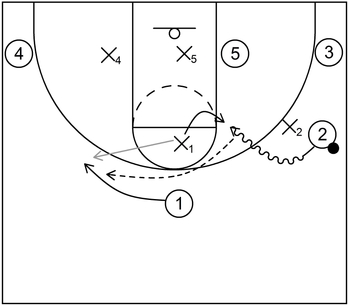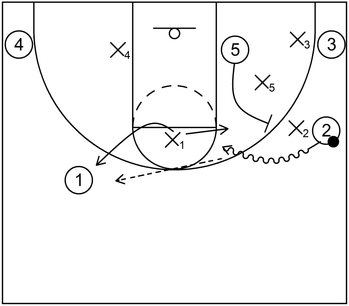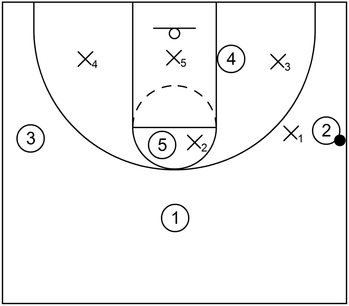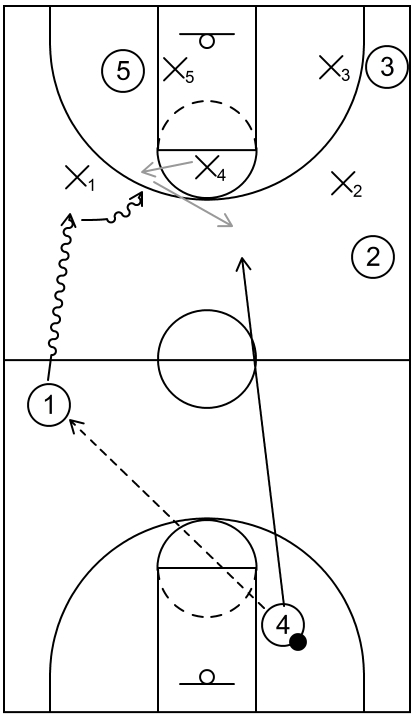Where is the nail on a basketball court
The nail is at the center of the free throw line and its technical purpose is to line up the basketball goal so that it is centered and perfectly aligned with the basketball court.
In reference to basketball defense, the nail is primarily used as a marker on the court, particularly by perimeter defenders, who could then use that marker to hinder the offense.
Why is it important for basketball defenders to cover the nail
It is important for defenders to cover the nail because this defensive tactic could limit or prevent dribble penetration, especially into the lane area near the basket.
Simply put, without some type of nail protection by the defensive team, the offensive team could potentially get the ball into the middle of the court, which opens up multiple scoring options from both sides of the floor.
Furthermore, by establishing a defender on the nail, this could disrupt the high post actions of the offensive team such as the high low set or prevent easy high post entry passes, particularly against certain types of zone defense.
In other words, if the offensive team sends a player to the high post, then a defender that covers the nail could either deny any passes to that high post player or at the very least, make it more challenging for the offensive team to run their actions through that high post player.
Essentially, by guarding the nail, the offensive team would have to settle for jump shots, perimeter passes, or baseline dribble penetration which could then lead to difficult field goal attempts or turnovers.
One other thing to note is that when middle dribble penetration occurs, particularly from the wing, defenders who cover the nail are usually one pass away from their respective assignments.
Therefore, it is important for those same defenders to understand the stunt and recover concept while executing nail defense.
In other words, defenders that cover the nail should not fully help off the ball one pass away, at least in most instances. This would most likely cause the ball handler to simply pass to the nail defender’s assignment which then would lead to a potential wide open jump shot or more dribble penetration.
Instead, the nail defender should only stunt at the ball for about a second while still splitting the difference between their man and the ball handler.
By doing this stunt action, the ball handler would most likely settle for a jump shot which is usually a bad shot or pass to the nail defender’s assignment.
If the latter option occurs, then the nail defender should have enough time to recover and execute a defensive closeout on their original assignment with no opportunity to take a wide open jump shot or easy dribble penetration.
What are examples of nail defense in basketball
Example 1a – Bad nail defense

This is an example of bad nail defense which is essentially no nail protection at all. For this case, 2 beats X2 with middle dribble penetration but X1 is too occupied guarding their assignment, which is 1, far from the basket instead of protecting the nail.
However, it is not necessary for X1 to cover 1 that far from the basket. The reason is because 1 does not have the ball and 1 is probably not going to shoot the ball from that distance like Steph Curry.
Yet, even if 1 does decide to shoot that far away, it is generally better to give up a shot 30 feet from the basket as opposed to potential dribble penetration into the paint just based off of shooting percentages alone.
So, once the middle dribble penetration occurs, this leads to X5 having to guard two players; that is their own assignment (which is 5) as well as the ball handler.
At that point, 2 would either shoot the short jump shot or floater in the lane or pass to 5 if X5 attempts to contest the jump shot attempt. Either way, it is a bad scenario for the defensive team.
Example 1b – Good nail defense

This is an example of good nail defense which does not allow middle dribble penetration. To start, 2 beats X2 as before but X1 stunts at the ball to prevent the middle dribble penetration.
When that occurs, 2 has to settle for the jump shot or pass the ball. For this case, 1 drifts away towards the weak side and receives the ball from 2.
However, since X1 only stunted at the ball for a split second, X1 has enough time to recover and closeout, represented by the gray arrow.
Example 2 – Nail defense vs. side ball screen

This is an example of nail defense against offensive action that seeks to create middle dribble penetration by way of a side ball screen. 2 dribbles towards the middle of the lane via the side ball screen set by 5.
However, X1 is at the nail and stunts at 2 to limit or prevent the dribble penetration. After that, 1 receives the ball from 2 but X1 recovers to closeout and prevent the wide open jump shot or easy dribble penetration.
Example 3 – Nail zone defense

This is an example of nail defense used within a 2-3 zone. X1 closely guards the ball near the wing while X2 drops back to protect the nail. At the same time, X2 takes away the potential high post entry pass, which could also prevent possible high low action between 4 and 5.
Furthermore, if 2 decides to dribble towards the middle, then X2 could simply stunt and recover to limit or prevent the dribble penetration.
Example 4 – Nail defense when assignment is far away

This is an example of nail defense which occurs when the nail defender’s assignment is a great distance away. In this scenario, 4 executed a pitch ahead pass to 1 during a transition offense sequence.
Even if that occurs, X4 should still drop back to protect the nail. This will limit or prevent the potential dribble penetration of 1. So, X4 could stunt at the ball and then recover to the respective assignment as shown with the gray arrows.